Working on the Edge of the Wild
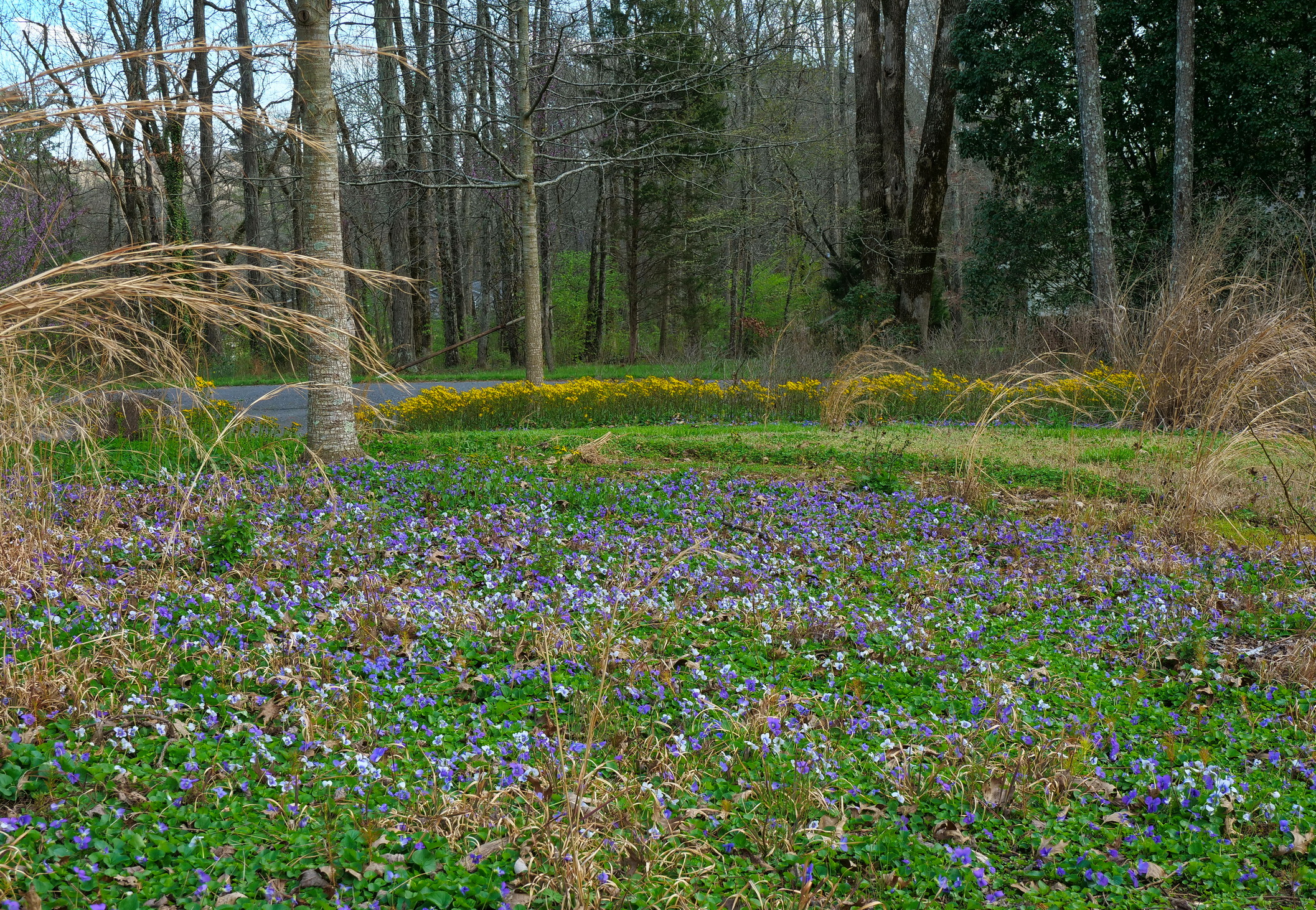
I’d been imagining a native landscape-gardening school called “Working on the Edge of Nature,” a place where students learn how to work in the liminal space, the transitional threshold, where nature and human life meet. As I delved further into the idea, I recognized that the school might best be called, “Working on the Edge of the Wild.” This wording acknowledges an important fact: Our human life is part of nature, not separate from it: human life is an absolute, ongoing, ceaseless engagement with nature. We take in nature with every breath we take, and we impart ourselves into nature with every exhalation. There is no alternative habitat for us, no middling place to be found: We are always, everywhere, in nature. On the other hand, it is far-fetched to contend that we – as domesticated creatures – are, in fact, of the wild. We may occasionally flirt with the wild, and we may occasionally hear tales of wilding adventures from those in our cohort, but we are not creatures of the wild – the wild does not encompass us. That’s because domestication largely binds us to homesteads, providing boundaries that distance us from the wild. Nevertheless, nature embodies us within our homesteads, gathering us in along with the wild. Nature includes both a physical and metaphysical place for us to encounter the wild, a safe place where we can co-mingle on the edges. Within nature’s realm we can come to know of the wild, while remaining distinct from the wild. Stephen Jenkinson refers to this meeting place as “the welt,” and he suggests that human culture is born in this fecund territory where human life interlaces with the wild. It is similar perhaps to the place where a field merges with the forest. This zone is often referred to as the edge of the woods, but in reality it contains two edges, an edge of field and an edge of forest. The place where they overlap is a distinct place, part the one and part the other. Similarly, the welt is an overlapping of two edges, it’s the place where our diverse understandings of human culture meet with the mysteries of the forest. Much happens there: It is a transitional place of great biological activity and home to a great diversity of plants and other wildlife species.
You may wonder, as I do, where, ultimately, the edge of the wild begins — and ends. Several months ago, looking out the back window on an early March morning, I saw dormant native grasses, in hues of brown, blowing in a cold winter-like wind. They sure did appear wild on that blustery day, but I had planted many of those grasses myself. How wild, really, are the native plants that I, a domestic gardener, purchased at a nursery and planted with my hands? Each fall, those grasses have done the work that nature obliges: They spread their seed, and after some seeds germinated the following spring, new seedlings grew. When I scrutinized those grasses further, I saw the whole that is, I saw one large colony; the plants I planted with my hands were mixed without apparent distinction from their offspring. I wondered again where the wild begins and ends. Moreover, I recognized that the source of the plants was even more diverse than I had first considered. While most of the plants in my view originally came from nurseries, some I had dug and transplanted here from other local gardens. Others emerged from nature entirely on their own; I had no hand in their coming here at all. My only role was to make space for them by removing invasive and other weedy plants. Collectively, the plants I saw out the window that morning are a wild mixture of plants from here and elsewhere, and some offspring of each.
In that same area, I saw a wood and wire fence running along the driveway. I had installed the fence to contain Jambo, the dog, but the fence does not contain nature; it is edged on either side by colonies of spreading, interbreeding native plants. The fence and drive, humans constructions, established lines dividing one natural area into two, but to the plants those lines are phantoms; the plants work as one continuous whole. It’s still more evidence that the zone is both wild and domestic, a place where the edge of human life meets with the edge of the wild, in nature. Our human will and the will of the wild converge in the welt. This convergence of wills defines our relationship with the wild.
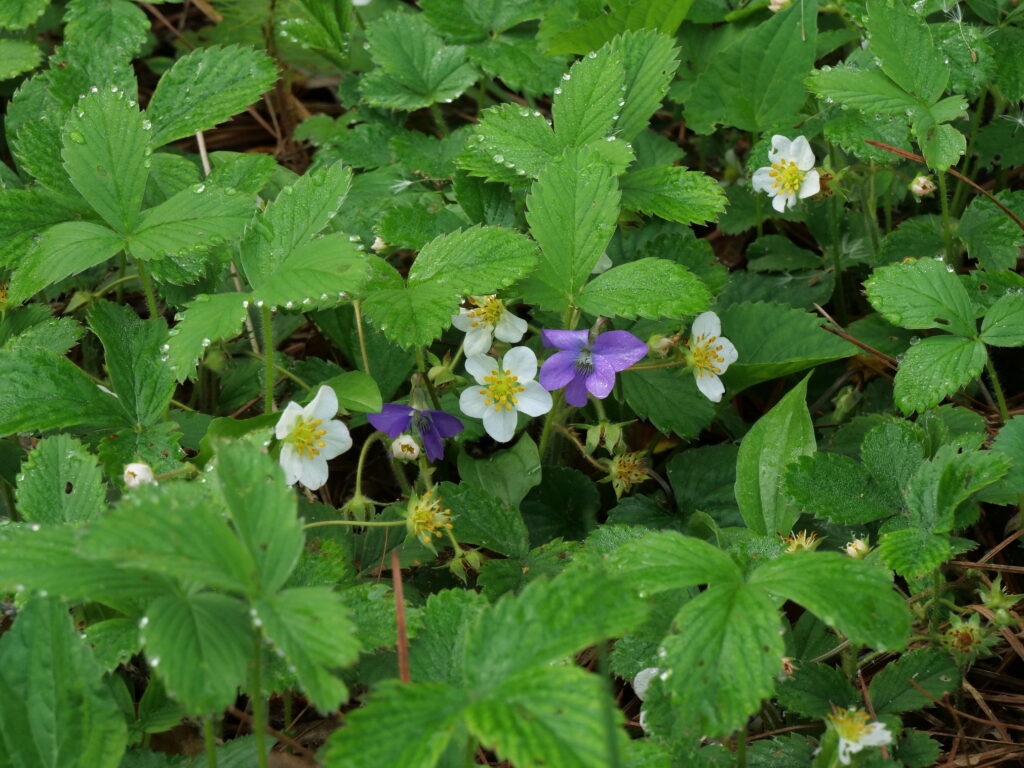
Yesterday, I was pulling weeds in an area out back. Once a weedy lawn, it’s now an experiment in letting nature happen. I started by planting a handful of small oaks and maples when I bought the property in the fall of 2014. The following spring, I began removing the lawn and spreading recycled wood chips over the area. The wood chips restrained the weeds briefly, but soon the weeds were growing through the chips, and in time the weeds re-covered the land. As vigorously and repeatedly as tried I to contain them, they even more vigorously and repeatedly resisted containment. As their will to grow overwhelmed me, I was compelled to rethink my concept of weeds. For instance, many years ago, I learned in the lawn and landscaping trade that common purple violets were weeds; but, are they, I now wondered? How about our native broadleaf plantain? Are we to eradicate all these “weeds?” Honestly, regrettably, it took me a few years to answer the question. I removed a lot of violets and plantain in that time; then, finally, albeit reluctantly, I subsided from sheer exhaustion. Exhaustion, in fact, came to dissolve the barriers in my mind that had long segregated weeds from landscape plants. Distinctions blurred. Plants I once considered weeds began crossing a long-established threshold, entering the domain of acceptable landscape plants. I was now persuaded those violets and plantain were essential ground-cover plants, courtesy of nature; I let both grow. Several years later, I gathered bare-root plants of golden ragwort (Packera aurea) from a fellow gardener’s yard, and planted them among the violets and plantain. They began to flourish. Later still, I gathered American wild ginger plants from the same gardener’s yard and planted them in that area; they too began to spread. All the while, I was weeding out undesirable plants, both native and not, including buttonweed, chickweed, and the endlessly-reproducing hairy bittercress.
It was a successful endeavor, but I did find my limit when I tried to remove the white clover that was popping up throughout the emerging native plants. White clover is a non-native plant, brought here by European settlers; it follows us from place to place as we move. Nonetheless, many people have considered it a beneficial plant. Very tenacious, it’s tough to pull from any soil and even tougher to pull from the heavy clay-loam soil in that part of my yard. I tried, but eventually I relented; I gave in to the clover. It wills to grow there with purpose, carpeting the ground with fine-textured dark green foliage and preventing soil erosion. It fixes unusable nitrogen, making it available to other plants. As clover grows through the ground, its roots fracture the dense clayey soil, thereby reducing soil compaction. On top of that, it blooms for months, providing nectar for many butterflies and other pollinator species, and adding a delicate beauty to the landscape. White clover lives vigorously on the edge of the wild, and, unlike other non-native plants, it provides valuable ecological services in many places where human life engages the wild. I wonder how it will mingle with the violets, the plantain, the golden ragwort and the wild ginger. I wonder if it can become a reliable and virtuous partner in the self-conserving landscape. It is certainly a rough-and-ready plant and it will certainly maintain itself without the interventions of any gardener. That, it seems to me, is much of what we need a self-conserving native plant to be. I wonder, once more, where the wild ends and the domestic begins.
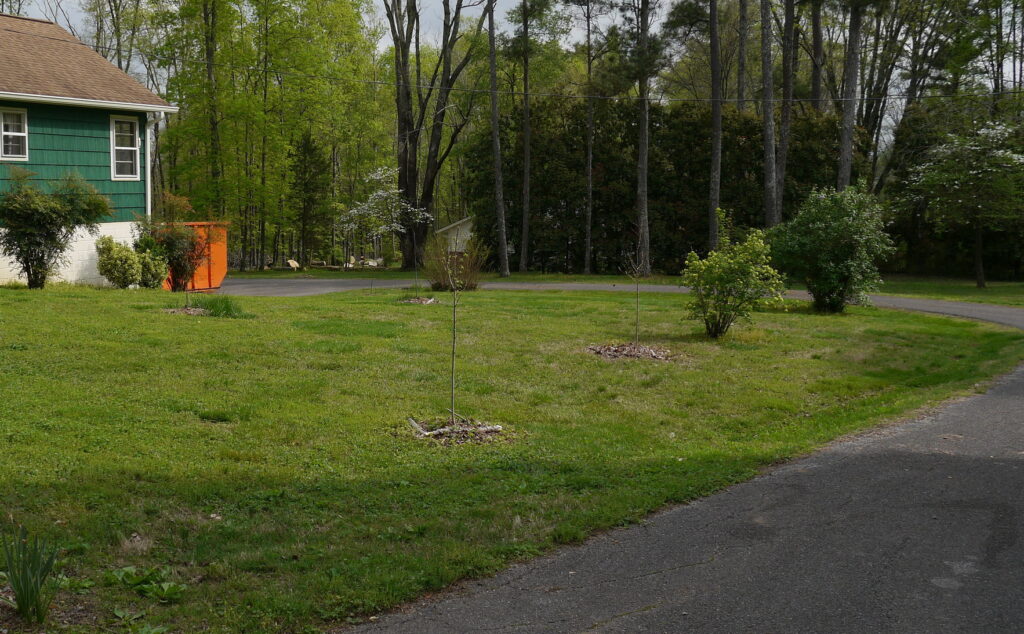
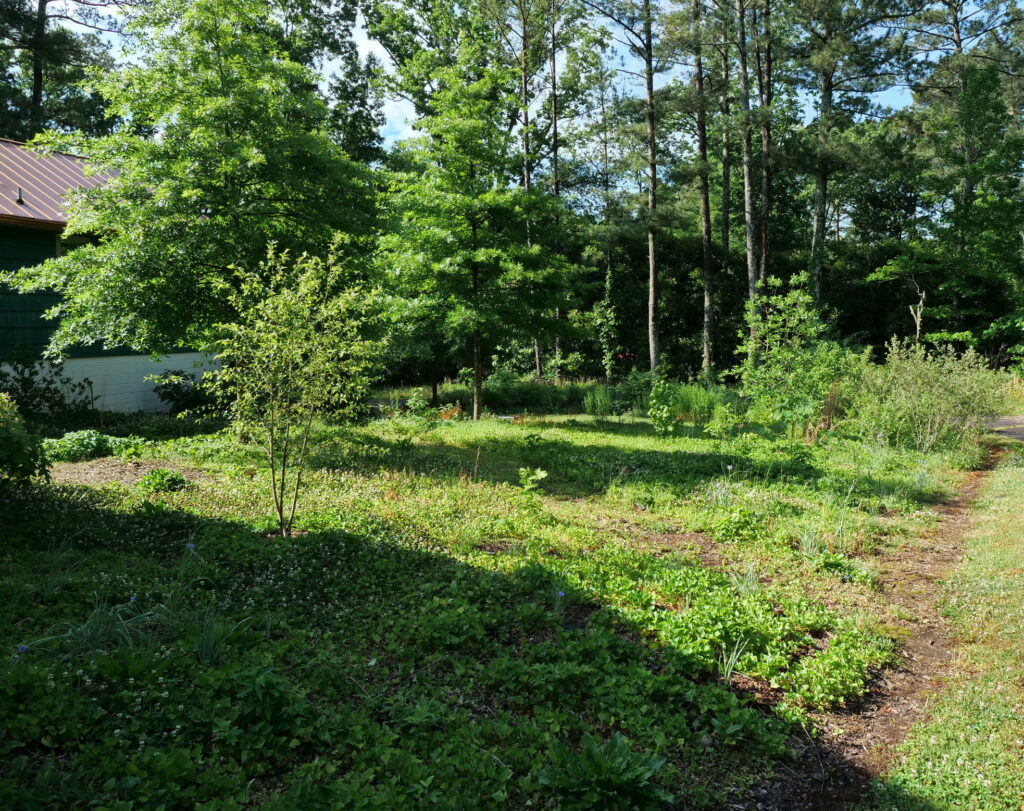
Thinking more about this liminal place — this place where the human meets the wild — I wonder what sort of place it actually is. It’s definitely a physical space, as where forest meets open field, but it’s more than that: it’s a living, vibrant engagement, a meeting of two wills, an encounter of wild and domesticated beings, both longing for life in nature. It is here in this meeting of wills that we can learn about the ways of the wild. It is here that we can accept weedy plants like violets and plantain as essential ground cover. It is here that our native gardening ideals often collapse, another casualty of exhaustion. In this convergence of wills we are gathered with the wild into the ways of nature. It happens in the welt, the meeting place founded in nature, a zone where we can safely approach the wild, commingle with the wild, and come to know the wild without overwhelming the wild — or being overwhelmed by it.
Nature provides and we decide. We provide and nature decides. I wrote about these concepts in an earlier blog post called “Nature’s Provisions.” These principles derived from my garden story here in Chattanooga Valley. In this story, nature provided plants such as common violets, broadleaf plantain and white clover to the landscape. Over time, as my perception of weeds slowly changed, I began allowing them to grow. Now they are spreading throughout an increasingly natural garden that is part human culture, part wild. When I planted the golden ragwort and the wild ginger, I was unsure of their fate. Not to worry: nature gathered them right in. They are prospering on the edge of the wild, mingling with the domestic in the welt, the place where I am imposing less and allowing more, the place where I am letting nature happen. Through this experience, I’ve come to see that landscape design must be more than a blueprint for imposing our will on the land. Landscape design must also permit space for nature to unfold, open space for the emerging common violets, the spreading broadleaf plantain and the creeping white clover. Designs employing such precepts arise from a very different relationship, a two-way relationship, that includes both the longings of humans and the longings of the wild. Nature provides and we decide, we provide and nature decides. It’s a merging of wills in the welt.
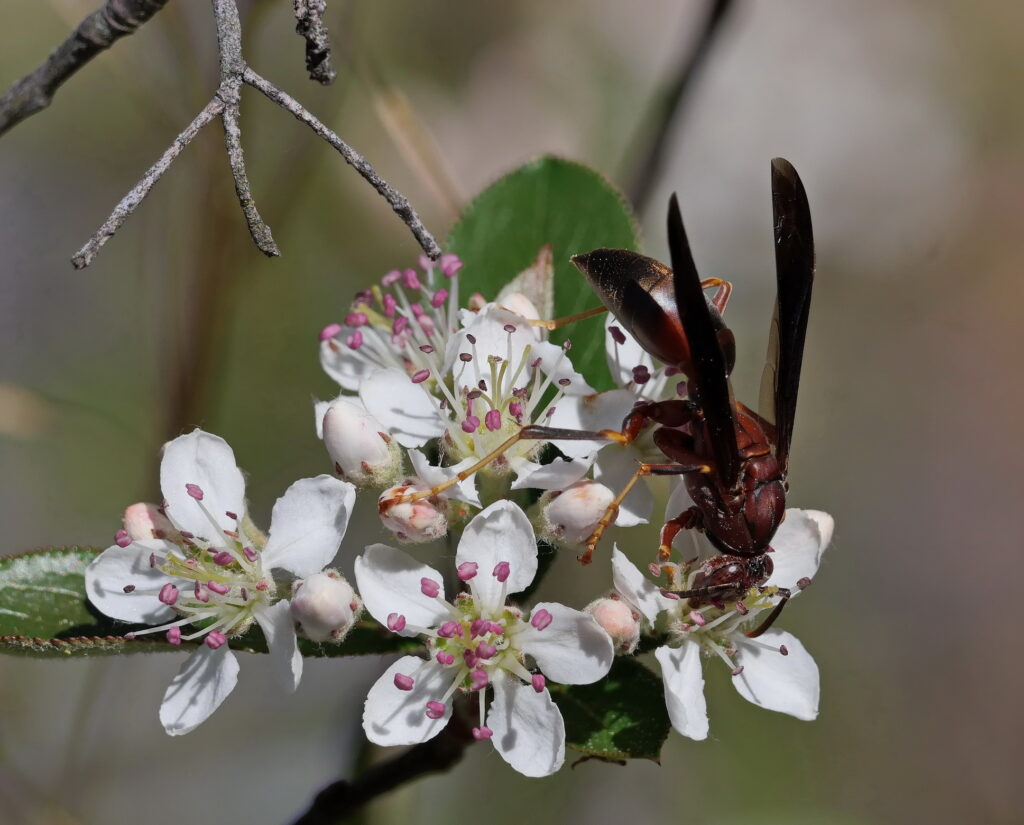
This, then, is where the school I am envisioning takes place — in nature, on the edge of woods, in the welt. The students will begin by spending time with the plants and other wildlife that currently inhabit our homesteads; they will learn their wild names, listen to their wild stories. Where did they came from? What brought them here? The students will learn what sustains the plants, keeping them here. They’ll learn too about how these webs of beings, both native and not, collectively sustain one another. They’ll study the natural ways of soils and plants, how plants plant themselves and tend themselves, how soils form, and how climate interacts with both soils and plants. Concurrently, the school’s students will learn about the ways of human culture, the ways of our domestic life, of human beings and the plants and animals that follow us. They will study the traditional ways of gardening, how we have worked with the soil, how we have planted and what we have planted. And finally, the participants will study the meeting ground, the welt, the place where humans safely gather with the wild in nature. What natural dynamics take place there? Does a melding occur, or not? How can we humans best engage with the wild in the welt?
Indeed, we must begin by allowing the wild to emerge in domesticated places. There is no welt without the wild. We must stop shunning the wild and allow the wild entrance into the garden, the entrenched domain that our landscape management practices have largely impoverished. We must begin then, as Stephen Jenkinson posits, with the poverty that surrounds us, the poverty that our own hands have created — and the utmost biological poverty in the modern landscape is in the lawn. The lawn has become such a dominant force in our landscapes that for many of us, our interactions with the lawn will largely define our immediate relationship with nature and the wild. Do we control it, manage it, mow it, weed it, treat it? Do we eradicate it? Or, do we let nature happen? I say this knowing that the lawn is truly not an “it”: the lawn is a collection of living beings, each with ancestral stories. Their roots may be from another place, but they are here now, their destiny mostly in human hands. What would happen if we stopped managing lawns, ceased the mowing and spraying, and allowed nature to encroach upon the lawn with wild and weedy plants, both native and not, emerging from nature’s storehouse. Will the wild drive out the domesticated lawn? When loosed in the welt, how wild is white clover, how domestic? What role does it play in the natural healing of the earth? What is our role as intermediaries, in this process? These are all questions that the school called Working on the Edge of the Wild” will ponder.
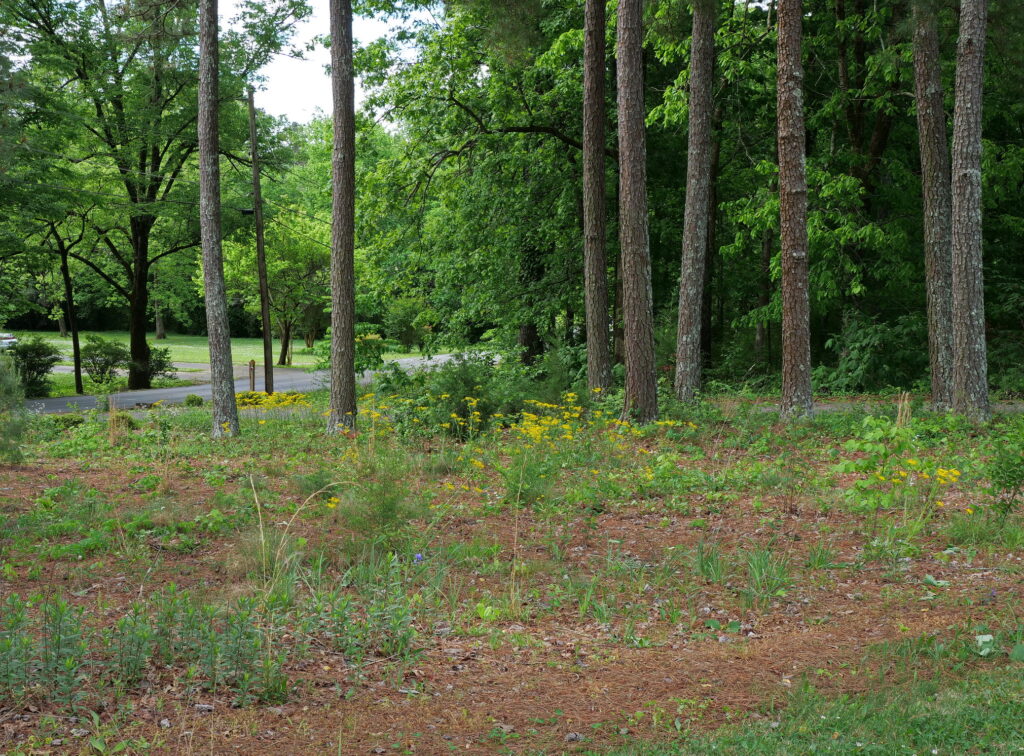
About five years ago I stopped mowing several areas of my overly-large lawn. I allowed the wild entrance into the garden. At first those spaces looked just as one would expect, like untended lawn. Over time though, as nature had her way, as the wild crept into the domestic, the area took on a natural beauty, a beauty that can only emerge from the untended. Where I weeded out the most tenacious non-native plants such as tall fescue and narrow-leaf plantain, native plants began to emerge. Small colonies of our white-flowering native yarrow sprang up under the loblolly pines, as did lanceleaf loosestrife and Southern ragwort. Wild strawberry began recovering the ground, along with our common cinquefoil. Then came smooth creeping bush clover and more Carolina wild petunia. Numerous species of asters soon appeared, as did several species of goldenrod. All these common but beautiful plants were in nature’s storehouse, lying in wait, longing to heal the land. And heal they did. The receding lawn became infused with the wild; the will of the wild merged with the domestic, becoming part of the welt. These days, most of my gardening work takes place in the welt. It’s my training ground for the school. It’s the place where I am letting nature happen, working on the edge of the wild.
Emily Campbell, thank you for working along with me through each draft to hone this piece into its final form. I appreciate you. Your skills are amazing!